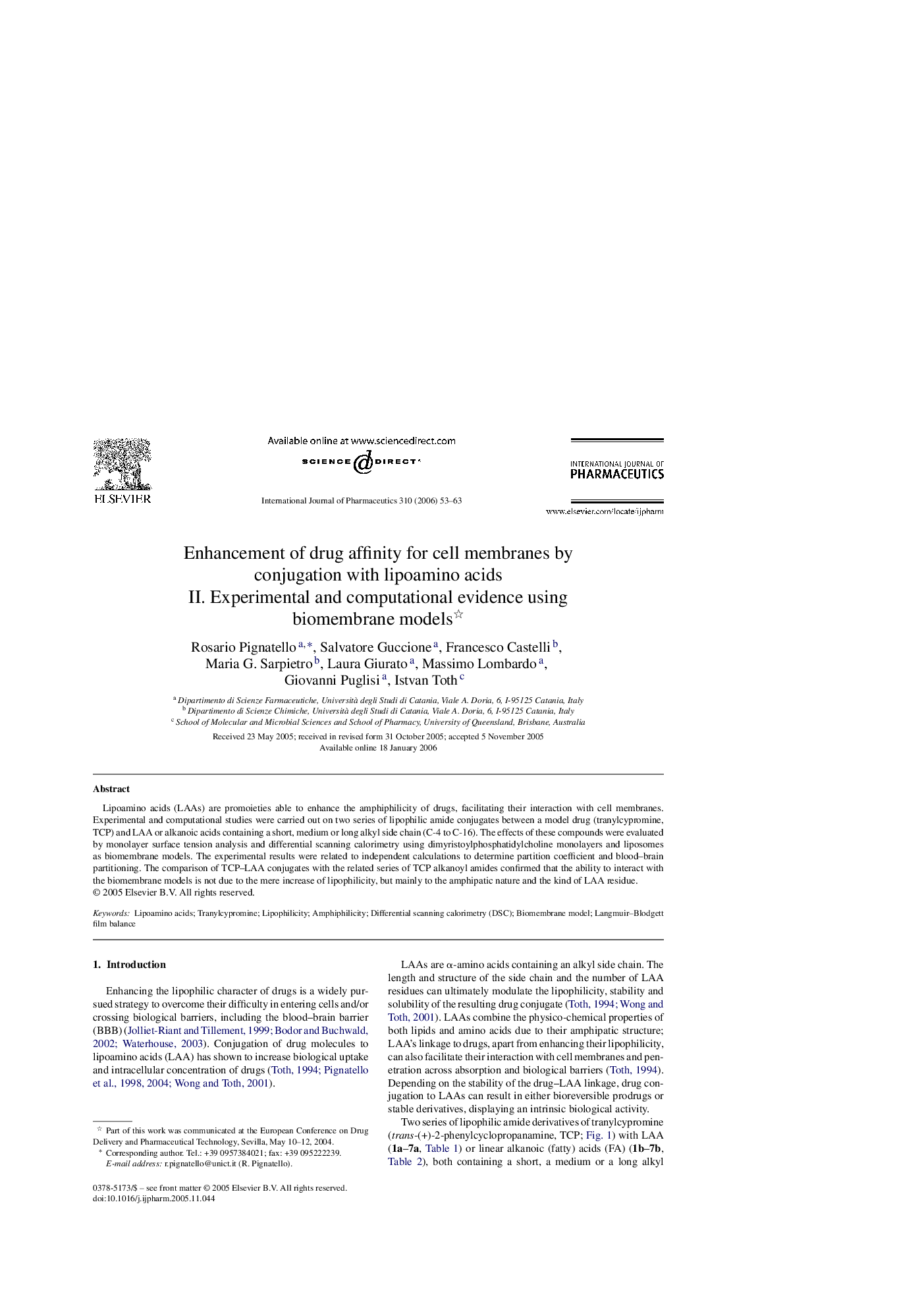| Article ID | Journal | Published Year | Pages | File Type |
|---|---|---|---|---|
| 2507022 | International Journal of Pharmaceutics | 2006 | 11 Pages |
Abstract
Lipoamino acids (LAAs) are promoieties able to enhance the amphiphilicity of drugs, facilitating their interaction with cell membranes. Experimental and computational studies were carried out on two series of lipophilic amide conjugates between a model drug (tranylcypromine, TCP) and LAA or alkanoic acids containing a short, medium or long alkyl side chain (C-4 to C-16). The effects of these compounds were evaluated by monolayer surface tension analysis and differential scanning calorimetry using dimyristoylphosphatidylcholine monolayers and liposomes as biomembrane models. The experimental results were related to independent calculations to determine partition coefficient and blood-brain partitioning. The comparison of TCP-LAA conjugates with the related series of TCP alkanoyl amides confirmed that the ability to interact with the biomembrane models is not due to the mere increase of lipophilicity, but mainly to the amphipatic nature and the kind of LAA residue.
Keywords
Related Topics
Health Sciences
Pharmacology, Toxicology and Pharmaceutical Science
Pharmaceutical Science
Authors
Rosario Pignatello, Salvatore Guccione, Francesco Castelli, Maria G. Sarpietro, Laura Giurato, Massimo Lombardo, Giovanni Puglisi, Istvan Toth,
